Abstract
1 The present study was designed to investigate both pharmacodynamic and pharmacokinetic interactions of clobazam and alcohol.
2 Eight healthy male volunteers participated in an intraindividual Latin square comparison of (a) clobazam 20 mg; (b) placebo; (c) alcohol + placebo; and (d) alcohol + clobazam 20 mg. Alcohol was administered orally in quantities individually calculated to yield serum alcohol concentrations of about 1000 μg/ml. The comparison of treatments (a) against (b) against (b) and (c) against (d) was double blind. Drug-free periods between the trials were 7 days.
3 Pharmacodynamic assessments were carried out before and 2, 3 and 5 h after administration using a series of tests of choice reaction performance, simple reaction time, two-hand coordination and body sway, together with self ratings, side-effects lists, vital signs and blood chemistry.
4 Blood samples were obtained before and 50, 100, 160, 220, 280, 340 and 1440 min after administration. Serum levels of clobazam and alcohol were determined by gas chromatography.
5 The dynamic results show significant differences between the alcohol and non-alcohol treatments and no significant difference either between clobazam and placebo, or between alcohol alone and alcohol + clobazam. Numerically, however, the detrimental effects of the combination were consistently stronger, indicating a possible pharmacodynamic interaction.
6 A pharmacokinetic interaction was found, as the serum clobazam levels were higher after combined administration of clobazam and alcohol than after clobazam alone. An enhanced absorption of clobazam and a reduced distribution volume may explain this finding which is comparable to findings obtained with diazepam and alcohol (Hayes et al., 1977).
7 It is concluded that combined ingestion of clobazam and alcohol is likely to be more hazardous than that of alcohol alone.
Full text
PDF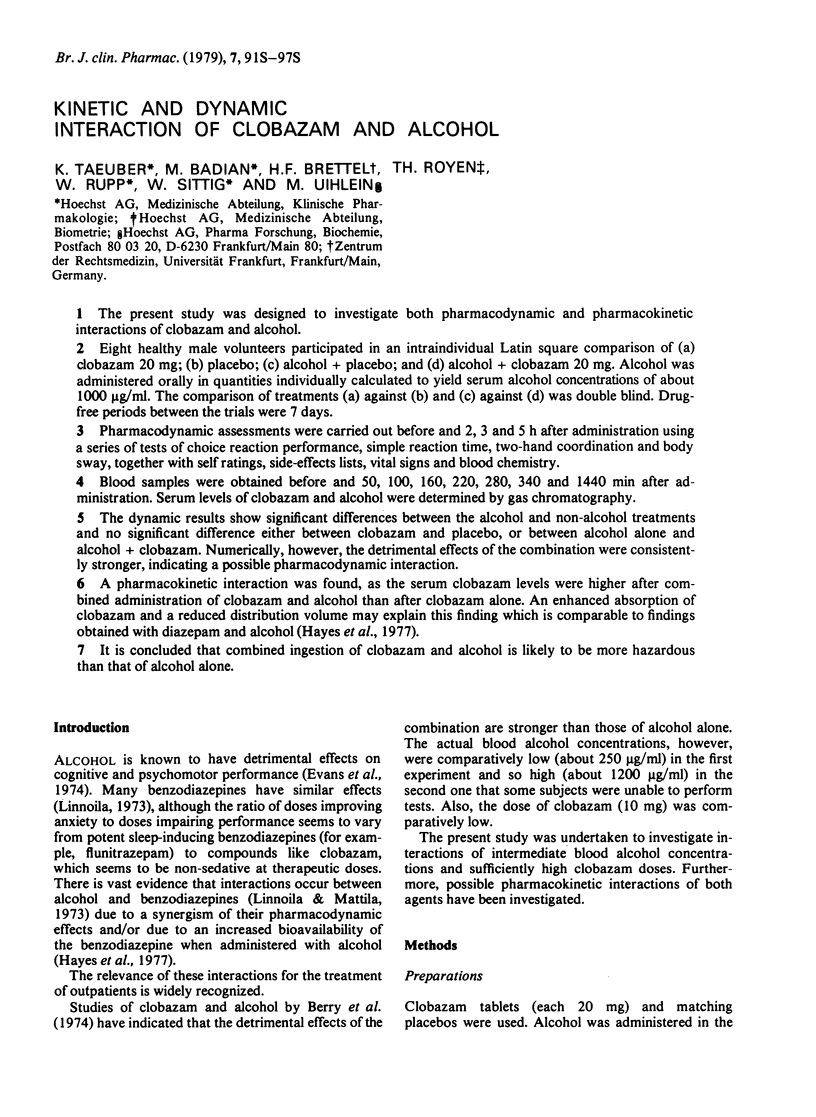
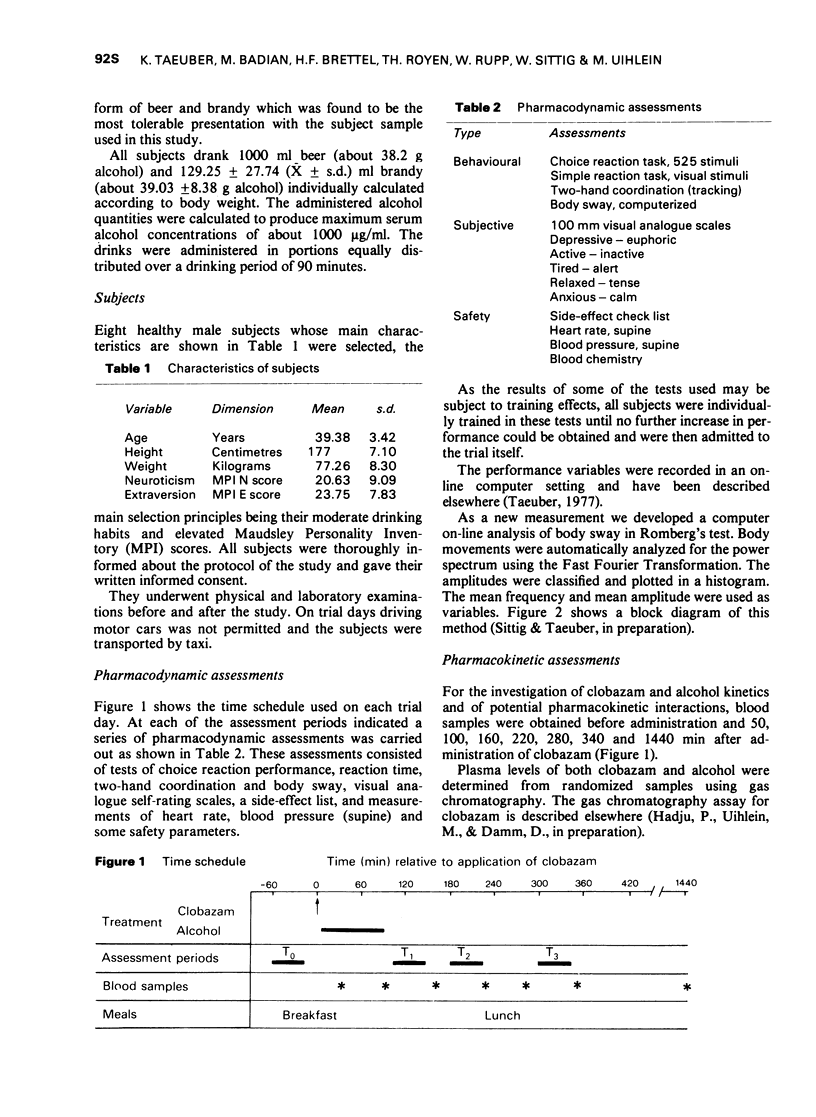
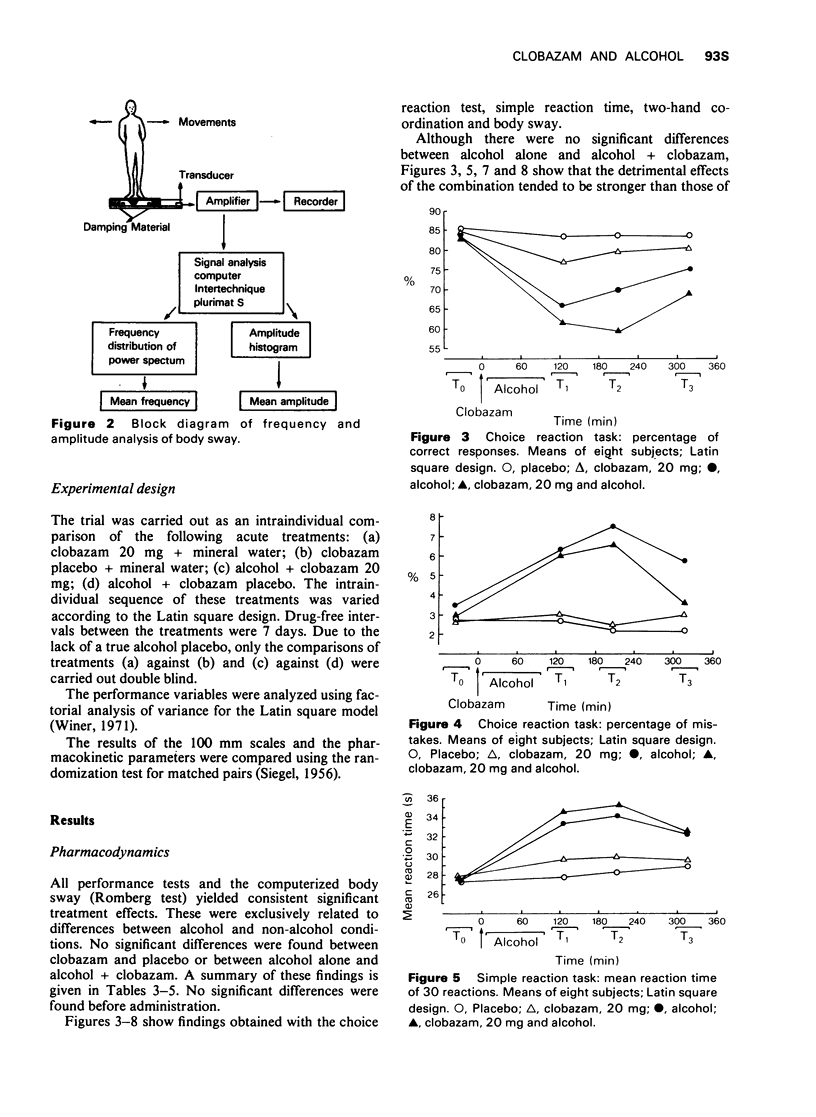
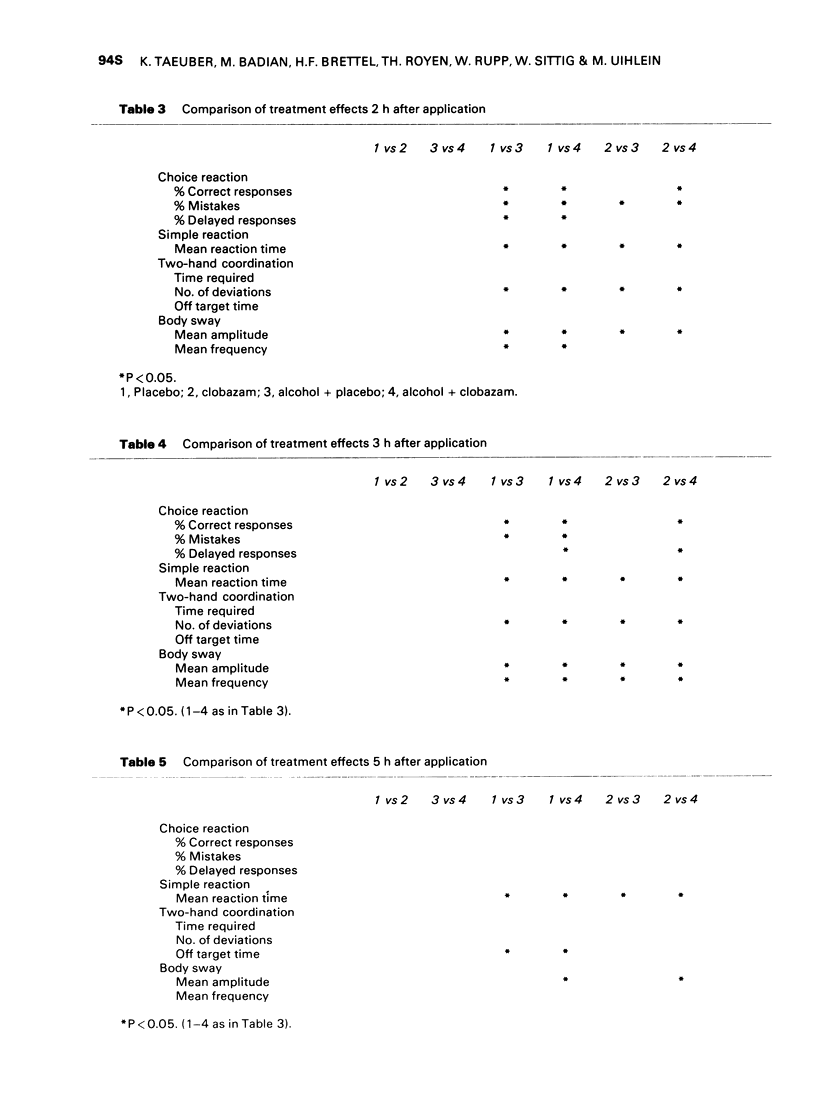
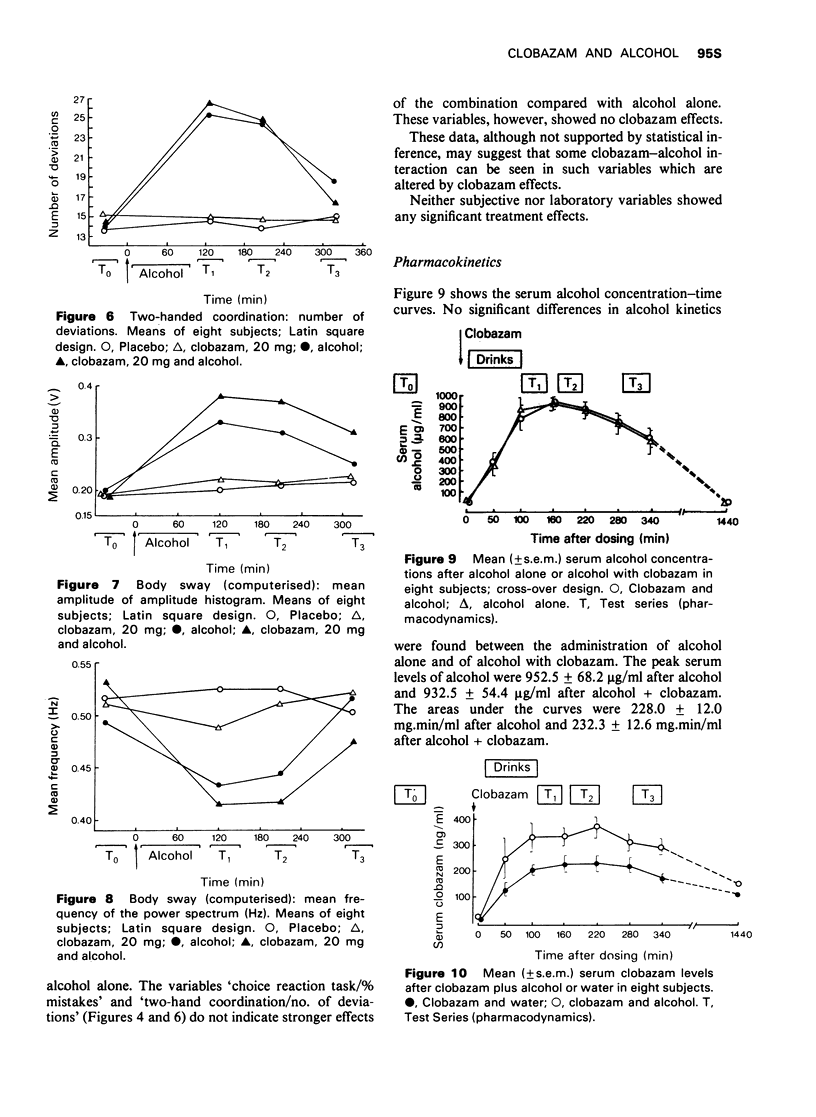
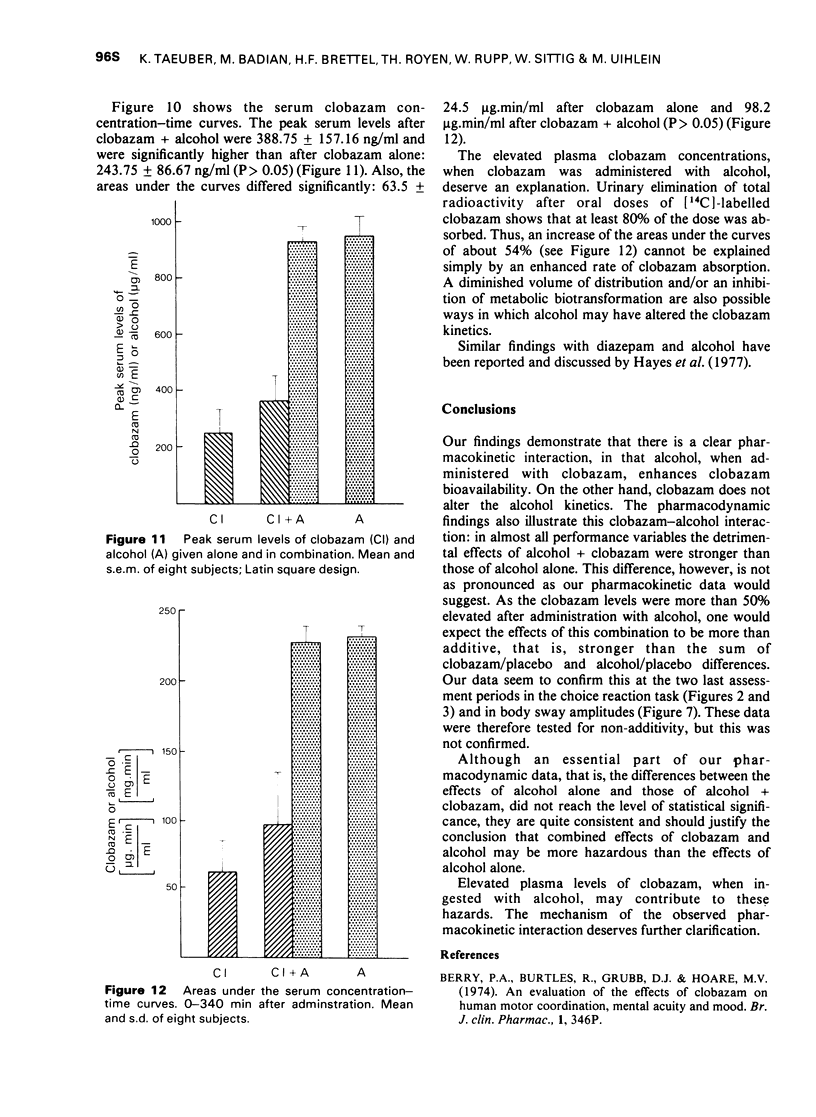
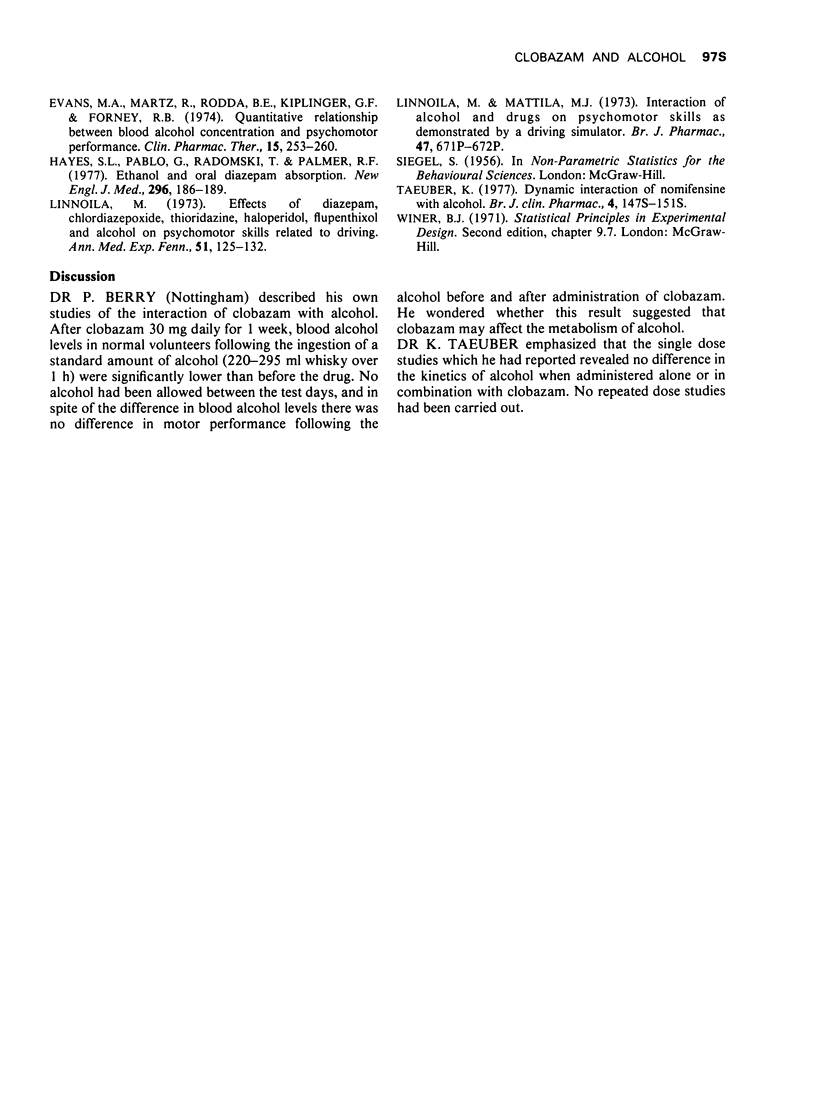
Selected References
These references are in PubMed. This may not be the complete list of references from this article.
- Evans M. A., Martz R., Rodda B. E., Kiplinger G. F., Forney R. B. Quantitative relationship between blood alcohol concentration and psychomotor performance. Clin Pharmacol Ther. 1974 Mar;15(3):253–260. doi: 10.1002/cpt1974153253. [DOI] [PubMed] [Google Scholar]
- Hayes S. L., Pablo G., Radomski T., Palmer R. F. Ethanol and oral diazepam absorption. N Engl J Med. 1977 Jan 27;296(4):186–189. doi: 10.1056/NEJM197701272960402. [DOI] [PubMed] [Google Scholar]
- Linnoila M. Effects of diazepam, chlordiazepoxide, thioridazine, haloperidole, flupenthixole and alcohol on psychomotor skills related to driving. Ann Med Exp Biol Fenn. 1973 Mar;51(3):125–132. [PubMed] [Google Scholar]
- Linnoila M., Mattila M. J. Interaction of alcohol and drugs on psychomotor skills as demonstrated by a driving simulator. Br J Pharmacol. 1973 Mar;47(3):671P–672P. [PMC free article] [PubMed] [Google Scholar]
- Taeuber K. Dynamic interaction of nomifensine with alcohol. Br J Clin Pharmacol. 1977;4(Suppl 2):147S–151S. doi: 10.1111/j.1365-2125.1977.tb05742.x. [DOI] [PMC free article] [PubMed] [Google Scholar]


